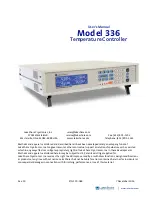
- 16 -
If one shunt on HD5 is installed on the center two header pins, logic is reversed.
Positive
voltage over 3 volts applied to the TX Mute will force the
NCC-1
into
standby and disable the antenna power feature. Any voltage below one volt,
including a grounded condition, will allow the unit to function normally.
Installation
Please read the following section carefully.
The best location for this unit is at the operating position with easy access to the controls since you
will be using the S-Meter on your receiver while adjusting the
NCC-1
.
Connections
Make connections to the
NCC-1
as follows:
Connect a fused power source of +13.8 to +15 Vdc @ 2A, well filtered &
fused to the 2.1 mm center-positive
MAIN PWR
jack using the included 2.1
mm plug. Well filtered and fused station power is recommended.
Connect a receiving antenna to the
INPUT A
F style or Phono connector.
Connect a second receiving antenna (or local noise source antenna) to the
INPUT B
F style or
Phono connector.
Connect a standard shielded audio style cable between the
T/R Control
Phono connector and
an external transmit control source.
o
By default, the
NCC-1
is set to mute when the
T/R Control
line is pulled LOW.
This is normal station wiring. Many modern transceivers have a rear panel amplifier
control jack typically labeled as "TX", "AMP", "Send”, “Control" or "TX GND" that
pulls low when the transceiver is keyed. (Check the user manual for your radio)
Note:
Internal jumpers (HD5) can be changed to allow the
NCC-1
to use an
in 5 to +50 Vdc amplifier control line. This is an unusual configuration.
o
T/R Control
line on the
NCC-1
can be paralleled on the same control line used for
the amplifier provided the amplifier does not load the line when not transmitting. If
the amplifier does load the line, you will have to add a blocking diode.
o
The
DX Engineering TVSU-1A
programmable sequencer can also be used to
provide the proper transmit/receive switching for an amplifier, transceiver, and the
NCC-1
. Refer to Appendix A for the high power installation connection diagram.
















































